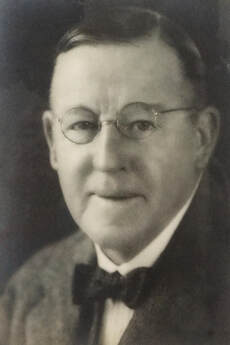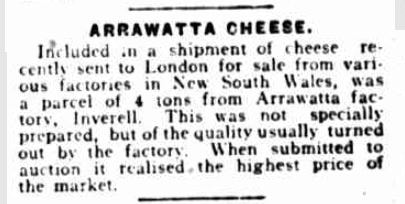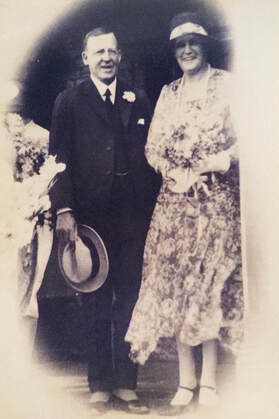Thomas John Bowling
|
|
July 12, 1911- 58 aUILDING- Country Building. WHAT THE LAND TAX MEANS—CONSTRUCTIONAL DEVELOPMENT. With the breaking up of the large estates through the application of the land tax, unpre cedented activity in country building is assured. This article shows how one estate is being turned to profitable account. Napoleon was once observed applying a proposition of Euclid to some tactical move. It was on the eve of one of his greatest victories. He was looking ahead, endeavoring to base the coming battle on the events of the present. But it is not only on the battlefield that the faculty to anticipate has won out. Peace, in stanced in commerce, - has her victories, and the victory of a New South Wales landed proprietor is interesting in that respect. To secure those higher uses for the land, by which the character and value of the products will enable a larger popula tion to live in increasing comfort, whether achieved by the incidence of the land tax or by the common sense and progressive efiforts of the land owners, is the objec tive of every patriotic Australian, and al though voluntary action cannot alone be depended upon for bringing about closer settlement, it goes a long way towards doing so when put forth in the whole hearted vigorous manner in which Mr. Tnomas Bowling, of Arrawatta Estate, near Inverell, has dealt with the subject The development of our lands is a purely commercial proposition. If an area of country which hitherto has pro vided a living for one individual or family can be made to provide for many, whether by the process of bursting up into a num ber of separate farms or by a concerted Scheme of general industry it matters little. In a vast country such as this, both operations will doubtless go on simultaneously, with the result that from the increased produce of the soil commerce in all directions must be benefited. Cheese Factory at “Arrawatta” Estate, Inverell Built of Reinforced Concrete. Building : the magazine for the architect, builder, property owner and merchant. Vol. 4, No. 47 (12 July, 1911) |
Late Thomas Bowling
----------- The death of Mr. Thomas Bowling will have caused a note of considerable regret to the older generation of the people of Inverell, where deceased was so conspicuous and so important a figure some 25 years ago (says the "Times.") He was a typical progressive Englishman and did much in his youth and energy to develop the rural capacity of the Inverell district. He was born in Lancashire in 1865 and was educated at the Lancashire Grammar School. His spirit of adventure early showed itself when he emigrated to New Zealand at the age of 21, where he remained for a few months only, then departing for Tasmania. He acquired country near Port Arthur in company with his brothers. Later the five Bowling brothers surveyed and pioneered King Island, off the coast of Tasmania, where they remained for several years. Later on Mr. Bowling went to Queensland to enter the service of the Australian Pastoral Company and subsequently took on stock dealing, operating in many parts of Queensland and this State. Mr. Bowling first came to this district in 1903 when he purchased Arrawatta from Mr. H. Morewether and conducted it for a while as a grazing proposition. In 1910 he purchased Nullamanna and used it in conjunction with Arrrawatta for his dairy herds. After a few years at Arrawatta Mr. Bowling went to England for a holiday and on his return commenced to develop Arrawatta as a high-class dairy estate, establishing lucerne and growing that and many other crops under spray irrigation. He also introduced a number of Scottish families to work on Arrawatta. While in England Mr. Bowling took the opportunity to study the latest in the designing of up-to-date dairy buildings, equipment etc. He also brought back plans of what he considered a suitable cheese factory for the estate. Mr. Bowling also visited some of the most famous milking Shorthorn studs and as this breed pleased him so much he arranged for the importation of two highly bred English sires. Mr. Bowling's ambition was to have at least 1,000 dairy cows in milk and he had established eight fully equipped dairies with all necessary buildings, silos, yards etc. A cheese factory was also equipped on the estate. It will be gratefully remembered how Arrawatta contributed to Inverell's winning of the great Commonwealth District Exhibit at Sydney Royal Show over several years in which he went to no end of trouble or expanse in providing a magnificent exhibit. Bad health and dry seasons together with over capitalization and similar troubles prevented Arrawatta from being a financial success and this was another case where the followers benefited greatly from the experience of him who went before. While at Arrawatta Mr. Bowling established a Corriedale stud— then Comparatively new breed of sheep —importing his foundation flock from New Zealand, and developed his stud to a high degree of perfection during his residence at Glen Leigh, Glen Innes, which he purchased in 1924 after the disposal of Arrawatta to the New South Wales Government, which was used as a youthful emigrants' training farm for some time under the management of Mr. Fred Harding.
Arrawatta was a large sheep station, and when it was bought by Thomas Bowling in 1903, it had 8500 acres and was running 11,000 sheep. Bowling had a vision for a dairy estate, and by 1908 had begun to make it reality. He divided the property into smaller tenanted farms for dairying, and by 1912, he had built a cheese factory which processed the milk from 450 Dairy Shorthorn cows, and had integrated operations for the distribution of fodder to the farms. With more than 50 people on the estate, it was even necessary to build a school. Drought which hit in 1919 and 1920, jeopardised viability, and revealed the extent to which Thomas Bowling had over-capitalised the development of Arrawatta. He arranged for the New South Wales Government to take over the property for 5 years, during which time it would be used for farm training of new migrants. This was to include the training of Dreadnought Boys, and the first of these came in August 1924. Over the next 5 years, 277 Dreadnought Boys were trained at Arrawatta. In May 1925 a new Lang Labour Government was elected to power. It immediately tried too close the farm operation, but yielded to very strong local reaction and desisted until 1929, when the training farm was closed down, the property broken up and sold off at prices well below valuation. |
TUESDAY, JANUARY 7, 1913.
AN AUSTRALIAN EXAMPLE. The Arrawatta estate in the Inverell district of New South Wales supplies to all whom it may concern an encouraging example of the good effects of close settlement. It was originally a large past-oral station, carrying thou- sands or sheep and hundreds of cattle worked by a manager, a cook, and a few boundary riders, except at shear- ing time. Nine years ago the area con- sisted of eight thousand acres of free- hold, but even then it was worked by the owner and three or four men as except a few cattle and horses, the stock consisted entirely of sheep, of which the land carried six thousand* But an extraordinary change has been brought about within a very few years. The area now consists of only four thousand acres, but though the property is still owned by one man, he has divided it into six dairy farms^ and intends to make a further division' which will bring the number up to eight. This will still give a quota of SUU acres to each farm, and thus the settlement will be close only in com- parison with its former condition. No doubt as time goes on there will bo still further subdivision, but even as it stands the example is of real value as an illustration of the advantages of. intensive utilisation, even in a com- parative form. We have shown what the property was a few years ago, the stock it carried, and the people re- quired to work it—Booo acres, 6000 sheep, about two dozen- "cattle and liors-^s a!l told, and^thtee or four men. Now, with a» area of four thousand acres, suVlivided into six farms, each wit!) n,, own stook, plant, overoeer, -.id workers, the property supports over oiio hundred persons, of whom more than a third are adults; £5000 a year is spent in maintenance; 2000 acres are down in lucerne, and the stock consists of 1000 head of cattle 1s(ihnecelups, iv7e5 ohof rs7e0s0, manildch200cows), 2500 pigs. The owner expects that he will, in a little while, be milking 1000 cows all the year round; and that the milk will be sufficient to produce one ton of cheese per day, which at present prices would return £85 per ton. Surely this is a most instructive contrast with the con- ditions of the purely pastoral period. The principle on which the property is worked is co-operative, but each farm has its own profit and loss account and separate equipment in the way of yards, stables, stalls, silos, and water supply. The whole of the milk supply from all the farms is sent into the cheese factory. The exact amount of milk a certain farm sends to the factory, together with the test and net result, is recorded. The manager has his office at tne factory, and can keep in touch by telephone with the various farms. Consequently the management is able to obtain reliable data as to the practical utility and suitability of the various breeds. Each overseer is required to render a weekly milk ri>- fcurn, giving the number of cows milk- ed, and otiier information. In fact, a daily history of every cow 'on the estate -is available, and every calf from every pedigree cow is numbered within 24 hours. This num- ber is entered in the registry kept for that purpose. As soon as the calf is old enough it receives the estate's brand on its ribs. The service record and "drying-off" are also entered, so that there is a complete index to every department on the property. It may bo added that most of the farms are managed by married men, whose fami- lies, of course, are able to assist in the milking. Then the farm-houses are awbelyll-built modern cottages, consider- better than the general run of | farm-houses. For tvne whole estate there are 14 silos, with an average capacity of 120 tons, and 15 large hay sheds, capable of holding over 150 tons each. Ten of the silos are built of concrete, and therest of timber. There are 2000 acres in lucerne, and about 500 acres under oats, wheat, maize, and sorghum. Maize forms the principal crop for ensilage, and is chaffed when green and blown into the silo. The cows are fed in the proportion of 51b of lucerne hay with 251b of ensilage, the lucerne hay being chaffed before mixing with the ensilage. Each farm has it* feeding and shelter stalls for winter use, these being served with a tramway running direct from the silos, which are grouped conveniently near. Water troughs are also provided, the "water for the entire farm being pumped from the river into storage tanks at the factory, and thence distributed over the estate. On each farm there' are also a milk-cooler and cooling rooms. By this means th& milk is al- ways kept down to 68 degrees, which isl a great consideration in the manu- facture of cheese. The milk running; down through the cooler is affected by the water running round the machine. There are other details, which may in- 'terest our dairying readers. For in- | stance, all the young poddies are fed near the factory, and appear to thrive | very well on the whey. Each farm keeps its own calves until they are two weeks old. From that time they arc fed on whey with pollard, molasses, and a little lime-water. The latter it> found to have a good effect. The pigs are also treated partially to a whey diet. The whey is run from the factory into several tanks, whence it runs into an open trough for thepoddies. A further trough runs to the pigsties. There are dairy farms in Taranaki with equally complete systems of working, but many of our readers will doubtless be pleased to know about the methods which are followed with such success in New South Wales. From another point of view, this Australian example has much to encourage those who hope for great things from closer and still closer settlement and increasingly intensive cultivation in New Zealand. https://paperspast.natlib.govt.nz/imageserver/newspapers/P29pZD1ITlMxOTEzMDEwNyZnZXRwZGY9dHJ1ZQ== |
Taken from the Pastoral Review, 15 July 1916 …
“There was great competition in the Corriedale classes and considerable interest was taken in the breed. Flocks are growing in number, and judging by this show, improving in quality. Judged by J.A. Sloane, Mulwala, NSW, the Champion ram was shown by Donald McFarlane, Eurella, Rylstone NSW and the Champion ewe was shown by Thomas Bowling, Arrawatta, Glen Innes, NSW.” |




